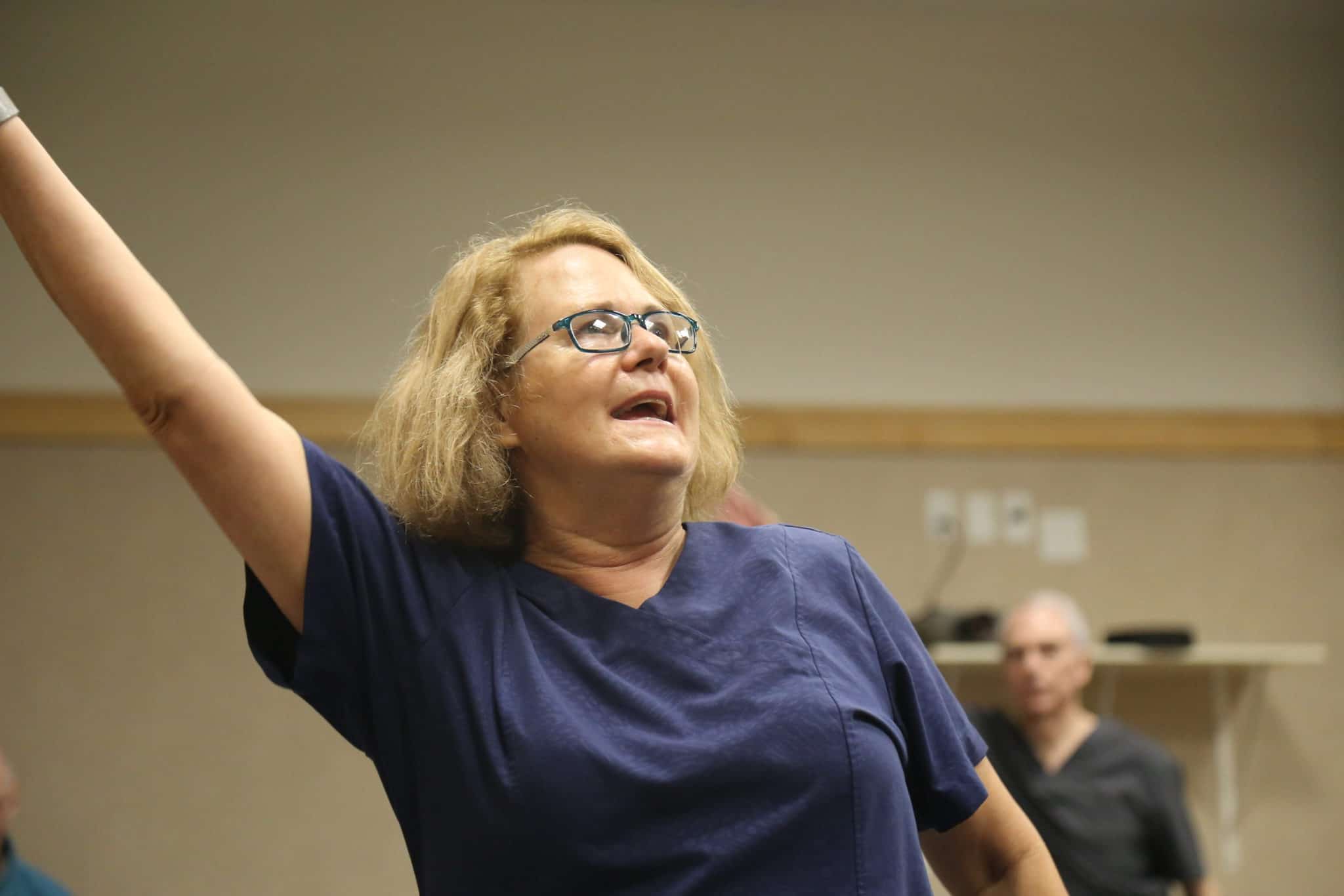View Larger Image

Kellie Coleman leads a fitness class for patients.
Exercise Program Helps Slow Parkinson’s Symptoms
| In a spacious room on the bottom floor of the Donald W. Reynold’s Institute on Aging, fitness instructor Kellie Coleman stands in front of a camera.
She begins leading about a dozen people through an hour-long exercise class for patients living with Parkinson’s disease (PD).
“Next, get on the edge of your chair, rotate your knee down, lift your heel up and stretch your leg back,” Coleman says as she demonstrates the stretches for the class to see.
Six people are in the room with her, each with 12 feet between them. There are several more tuned in to a Zoom call.
COVID-19 has changed the class format since last year, but the health benefits and comradery remain.
“Even though people are at home, they really feel good about being able to be in touch other people,” Coleman said. “That’s the difference in virtual classes versus just signing in and watching the video. You get interaction, you can talk to each other, see each other’s faces.”
This is the second year UAMS has been able to offer free classes to patients with PD thanks to a grant. Last month the Parkinson’s Foundation gave more than $1.5 million in community grants for Parkinson’s disease (PD) programs to support local health, wellness, and educational programs. UAMS received just over $12,000.
The classes use physical therapists and fitness instructors certified in Parkinson’s Wellness Recovery (PWR!) to enhance the exercise experience. Research shows that exercise is highly beneficial for those with Parkinson’s Disease. The classes use a combination of PWR!Moves® and high-intensity exercise to help slow the progression of PD symptoms.
For one hour, Coleman leads the class through a variety of circuits that focus on strength, flexibility, balance and cardio. There were planks, leg lifts, mountain climbers and jogging in place.
“Unstick those legs from the ground. That’s right. Count aloud with me. It helps strengthen our voices,” she says.
Several participants have worked up a sweat. “This is a really good workout,” one participant called out during circuit training.
“Part of the class is to really amplify the moves to make them large so that people won’t do small moves,” Coleman said. “We amplify all the moves to promote balance and posture.”
The interaction in the class led to Little Rock’s first support group for people who are living with Parkinson’s disease. And now that the classes are on Zoom, anyone from the state can easily join.
The free classes meet every Tuesday and Thursday at 2 p.m. If you’re interested call 501-526-5779.
Programs funded by the Parkinson’s Foundation community grants also include wellness, dance, music therapy and educational classes and services that can help people with Parkinson’s live better with the disease. These programs will benefit communities in 37 states across the country.
